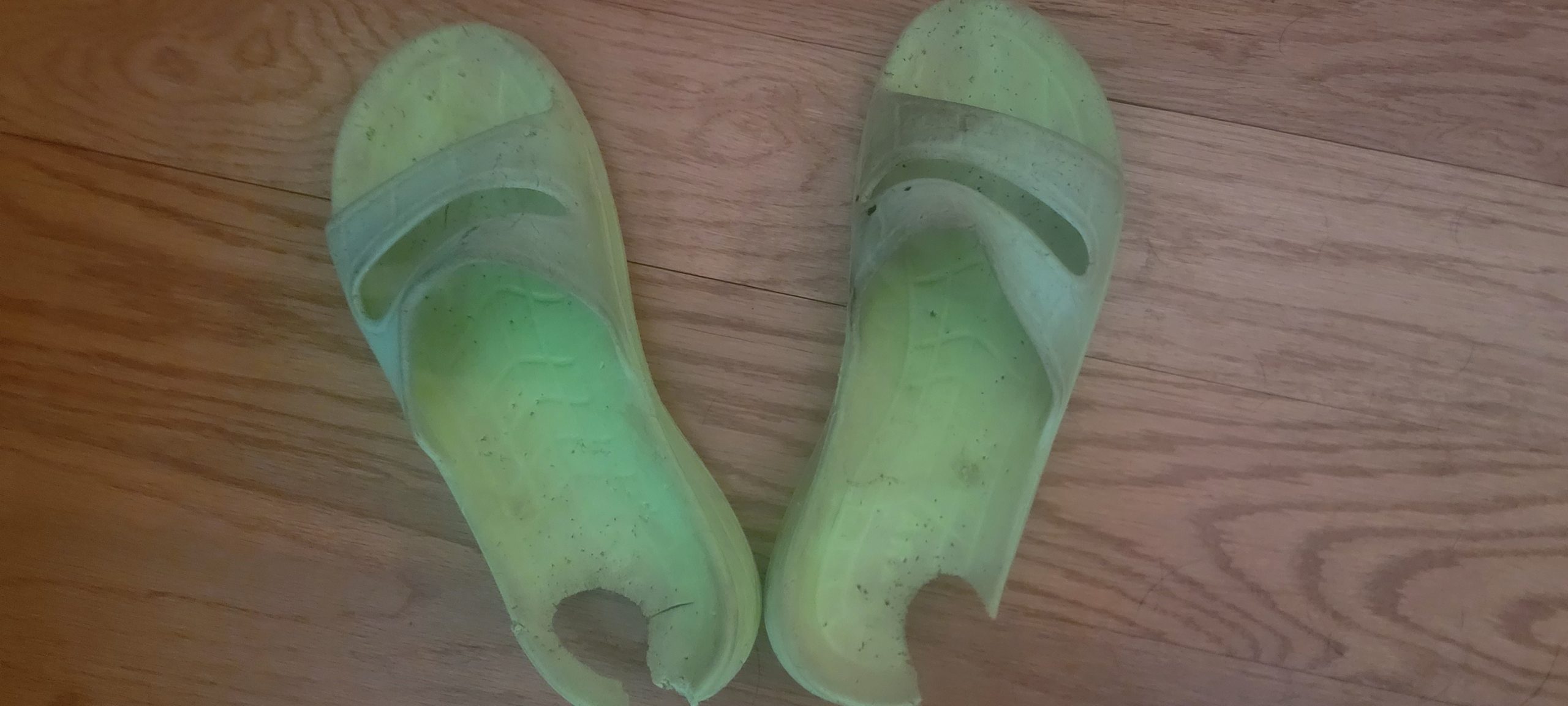In Her Shoes
Cultivating Compassion
I was the only woman on my first trip into Sudan, flanked by twenty something men. They were mostly American, but also included one Czech and a swarm of AK-47 toting, flip flop patrol—what the Sundanese People’s Liberation Army (SPLA) often goes by since boots are very hard to come by.
One late afternoon, after we had finished our daily distribution of food, modest cookware, blankets, and malaria-fighting mosquito nets, we circled back around to basecamp. Let me describe basecamp, lest you imagine something elaborate. It consisted of half a dozen or so one-man popup tents for we kawadjas (literal translation wealthy white people, of which we were only qualified for the white portion, but since we had the ability to come and go at will, we were deemed wealthy by the Sudanese), and one lone tree where a goat could be strung up, bled out and skinned for our dinner. The Sudanese simply slept on the desert floor.
Early that evening, the sounds of our goat bleating wore particularly hard on me. So, I laced up my boots and went for a walk. I’m not sure how far I walked down that dusty path, but suddenly it dawned on me, “I’m in the middle of a war zone, far away from where any of my comrades could hear me yell for help.” I surveyed the terrain and remembered that not only were bandits, warlords, and rebels afoot, but we were also very close to the Nile…crocodiles…pythons. With this new stream of consciousness, I made an abrupt about face, and started my trek back to basecamp.
Not many steps in, a tall, elegant woman drew near to me with a graceful gait. She wore a colorful piece of fabric fashioned into a dress simply by wrapping it about her body and tying it off at her left shoulder. She was striking and like nothing I’d ever seen before or since.
Pocked from the left hairline of her forehead running all the way to her jawline were large nodules, like you’d see on a crocodile. Although I was not familiar with this particular custom, I knew immediately this was a tribal ritual marking her as “one of them”. Probably considered to enhance beauty and perhaps even a signature of wisdom.
We both stopped, standing face-to-face, arms’ length alone came between us. The air was still. The sun, although lowering a tad, continued to beat brutally. A tiny dapple of sweat streamed over her crocodile pocks, like a large tear—a crocodile tear. I wanted to wipe it away, but it felt too intimate an act on my part. Until…
She lifted her hand with such grace I barely noticed its movement until her fingers slide across my own face. I closed my eyes and she ran them over my lids, like I do with my pony’s in an act of tenderness. She spoke no words, but softly grunted—like “hhhungghh”.
Then she lifted my right hand and guided it over her crocodile pocks. A real tear slid down my check and mingled among the sweat soaking my face. Neither of us spoke the other’s verbal language, but there is also the Language of Women, perhaps even I could just as well state the Language of Humanity. And, as if she had read my mind, we were both fascinated by the other’s vast difference of face. My practically ivory smooth skin compared to her ebony pockedness.
My new friend awakened me from my cerebral wonderings by taking a step back and pointing to the desert floor. She held her out hand, jutting index finger adamantly, as my eyes went back and forth between her finger and face trying to figure out her meaning or purpose in so doing.
I remained stupidly confused until she “spelled” it out for me. She reached down from her considerable height of at least six feet compared to my five foot six and touched the toe of my boot. I was no longer stupid for as I looked at her feet, I immediately knew what she wanted: my boots.
As she trod this 120-degree desert floor, her feet bore nothing but a pair of green flip flops. When she slid her feet from them, I saw they each had holes in the sole of them, but only at the heel because her feet were too large for the flip flops.
Without even thinking about it, I reached down and slid out of my boots. Handing them to my new friend, I slid my feet into her holey flip flops. She smiled gleefully, kissed me, and continued her journey, and I carried on toward base camp.
The following day, standing on our dirt airstrip, I was shocked to see a soldier wearing my boots. I was furious. My first thoughts were that he’d probably beaten her, stolen my boots from her, and God knows what else. I desperately wanted to confront this boot-stealing soldier. Thankfully, I had enough confusion about the entire exchange that I restrained myself.
After many tears over the well-documented violence to women in war zones, a lot of prayer, and some time of consideration, several things came to me. First, hadn’t I given the boots away? Therefore, they were no longer “my boots”. Second, this allowed my mind to open up to other possibilities, such as, maybe this soldier was my friend’s husband and she had wanted them for him all along. Or, perhaps, she used them as barter for food or medicine. The possibilities were endless—once I opened my mind instead of reacting and jumping to conclusions.
If I had felt compelled, even moved by God, to commit an act of random compassion, how could I judge what choices she or even the soldier made. I had only walked in her flip flops, not the shoes of her life.
War is complicated, people are complicated. All I can hope for now is to carry that same lesson of judgement-free compassion forward to my life in the US—as we all carry our complicated stories.
We never know who might be hurting so much that they need our “boots” today.
Note: for further reading on trauma, violence, compassion, and the churches response, consider reading Recovering Communion in a Violent World by Christopher Grundy.
Love, your sister along the journey,

Go to: kimberlyhighland.com for more information or to book a private session


